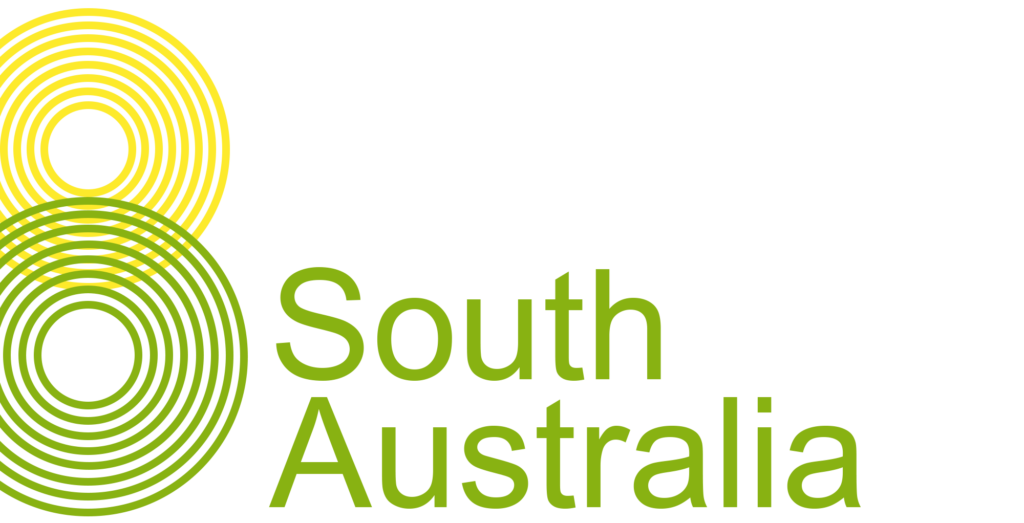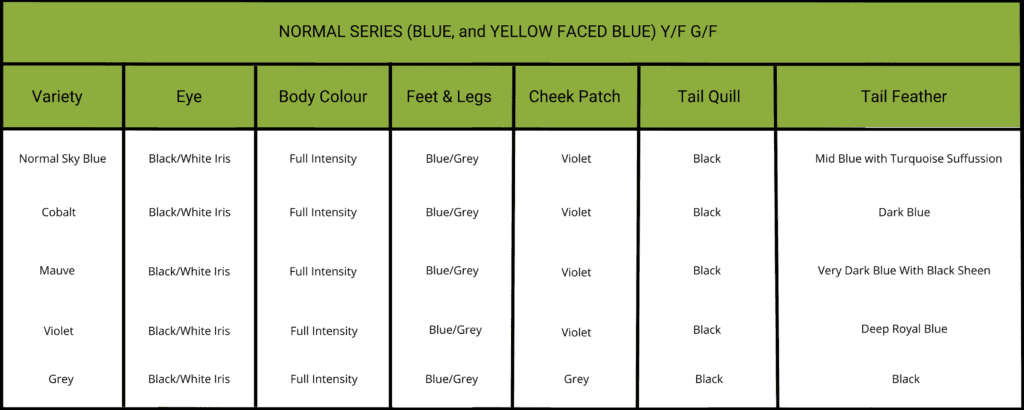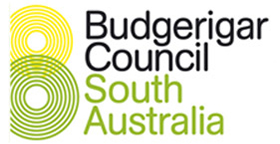
The Normal Blue Budgerigar
Normal Blue budgerigars have a fascinating history. Their first appearance was in Belgium in 1878, but they quickly disappeared. However, they reappeared in Le Mans and caused a great sensation when exhibited at the Horticultural Hall London in 1910 and at the Crystal Palace in 1911. In 1918, a fancier brought the first blue budgerigars to Australia. However, the birds were very washy in appearance and turned out to be failures. In 1920, another fancier brought out five pairs which were bred from and the progeny were distributed to other states and established. Mr Frank Buckle also imported some around 1923.
The Cobalt is another variation of the normal blue budgerigar, which appears to have been produced during the development of the Dark Green and Olive. It is recorded that they were bred in France by Mr G. Hedges, who was in charge of the collection of Mme. Lecallier in 1923. Mr Frank Buckle also imported them into Australia around this time.
Presumably, breeders mated two Cobalts together to produce the Mauves, another variation of the blue bird, which appeared in 1924. These birds have a rich and fascinating history and have continued to capture the fascination of budgie enthusiasts all over the world.

Image Courtesy of Rod Turnbull and the ANBC
The Budgerigar Council of South Australia (BCSA) Logan Shield features the Normal Sky Blue, Cobalt, and Mauve together in a single class. This is the preliminary event leading into the ANBC National Titles, where they are Class 3.
Identification of The Normal Blue Budgerigar
If you’re looking for a beautiful and striking bird for your aviary, consider the normal blue series of budgerigars. When selecting a bird, pay close attention to the mask and spots on the face, which should be clear, wide, and deep, with six evenly spaced black throat spots. The back, rump, breast, flanks, and underparts of the bird should be a solid and even shade throughout. Look for markings on the cheeks, back of the head, neck, and wings that are black, clearly defined, and symmetrical on the appropriate ground colour. The eyes should be black with a white iris ring, and the body colour should be at full intensity. Lastly, the feet and legs should be blue/grey. By following these guidelines, you’ll be sure to select a stunning budgerigar that meets The Standard for this variety.

The Cobalt budgerigar has a deep rich cobalt blue body colour, and the tail feathers are dark blue. By comparison, the Mauve budgerigar is a deep purplish mauve body colour with tendency to a pinkish undertone, and the tail feathers are a very dark blue with a black sheen.

Ideal Pairings to Produce Normal Blue Budgerigars
Pairing of Normal Sky Blue to Normal Sky Blue helps maintain body colour. However, some fanciers have commented that over time, they diminish in size. Additionally, other useful pairings include Sky Blue to Light Green split Blue. A further useful pairing is Sky Blue to Grey, where the grey in a single factor.

